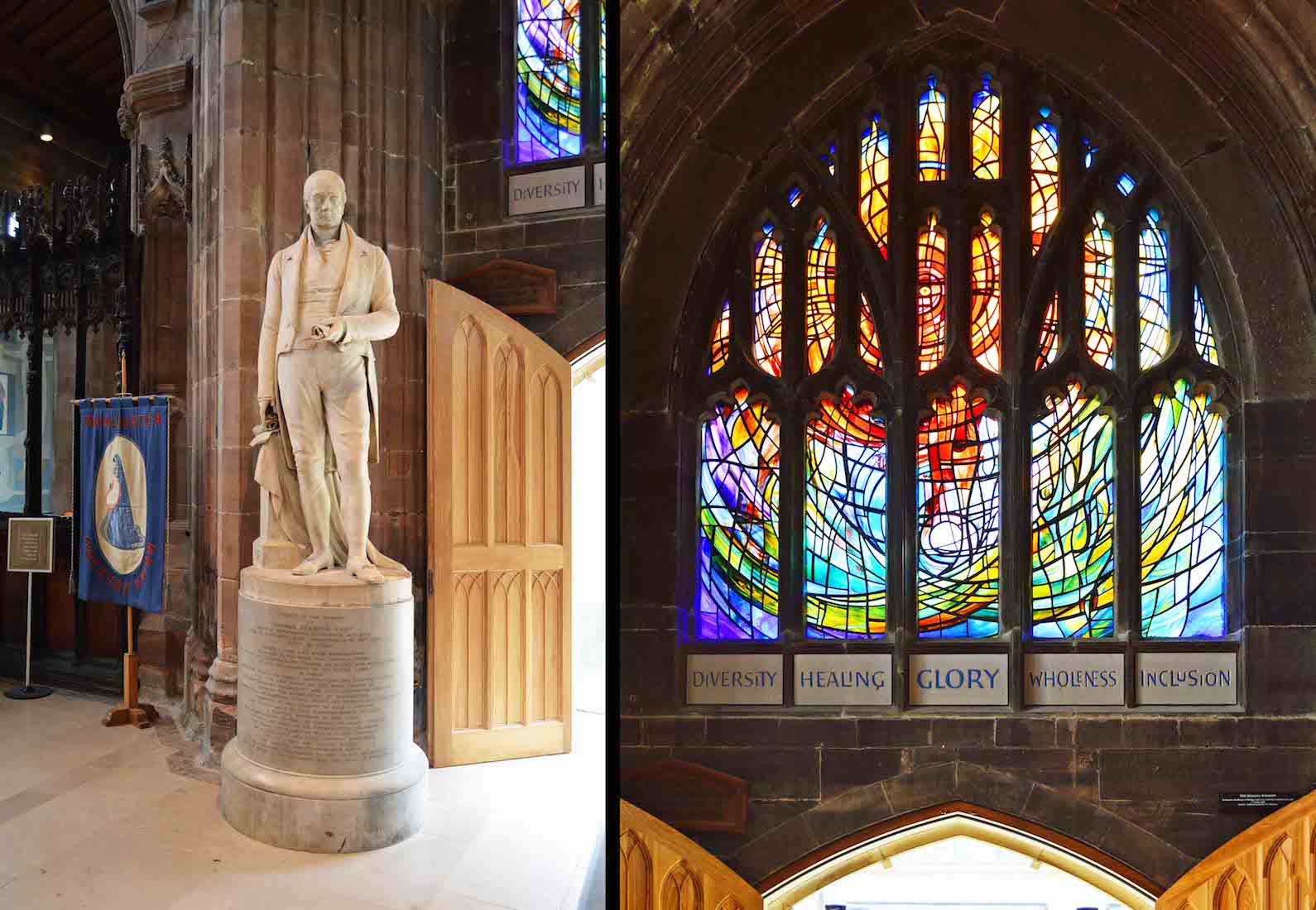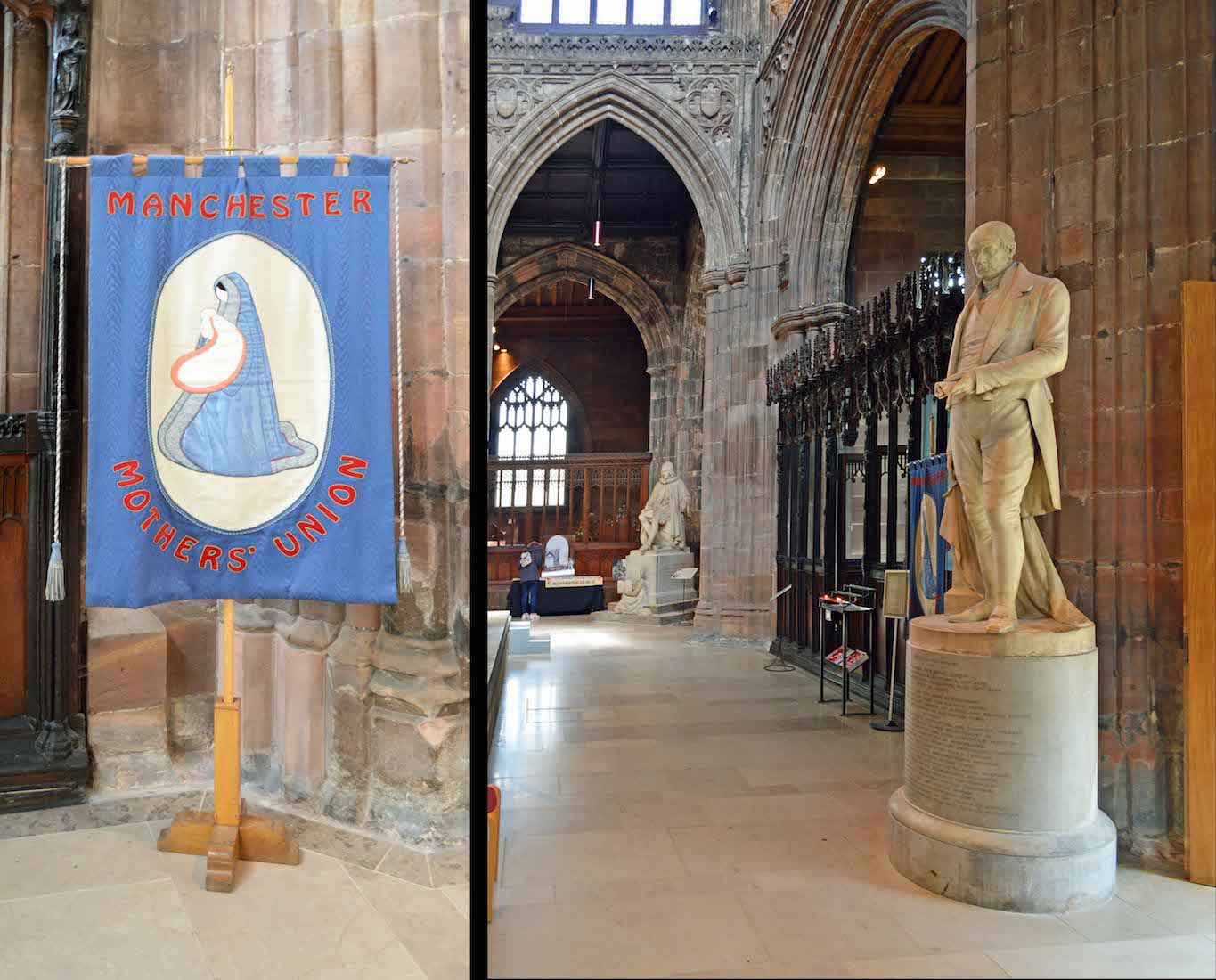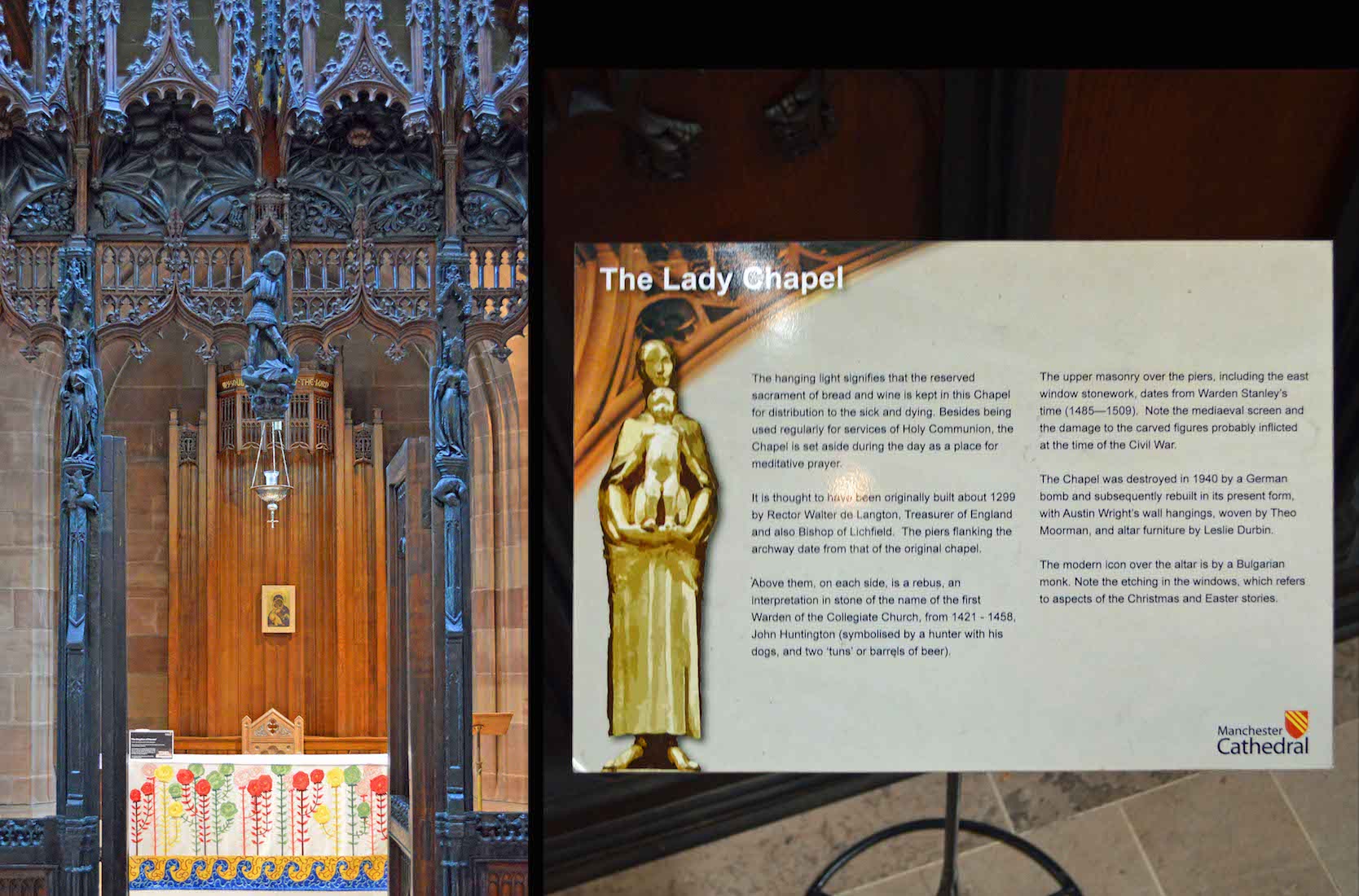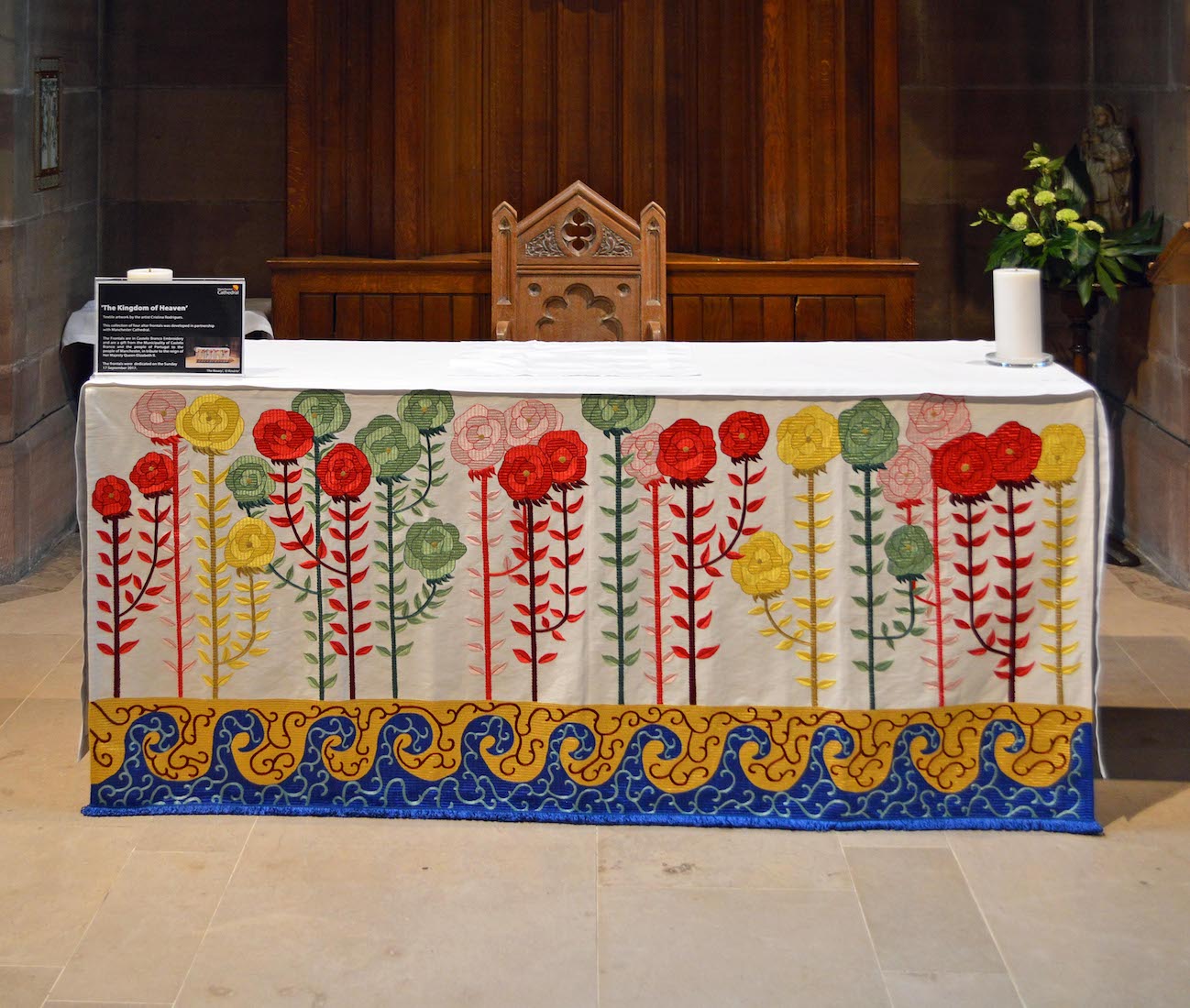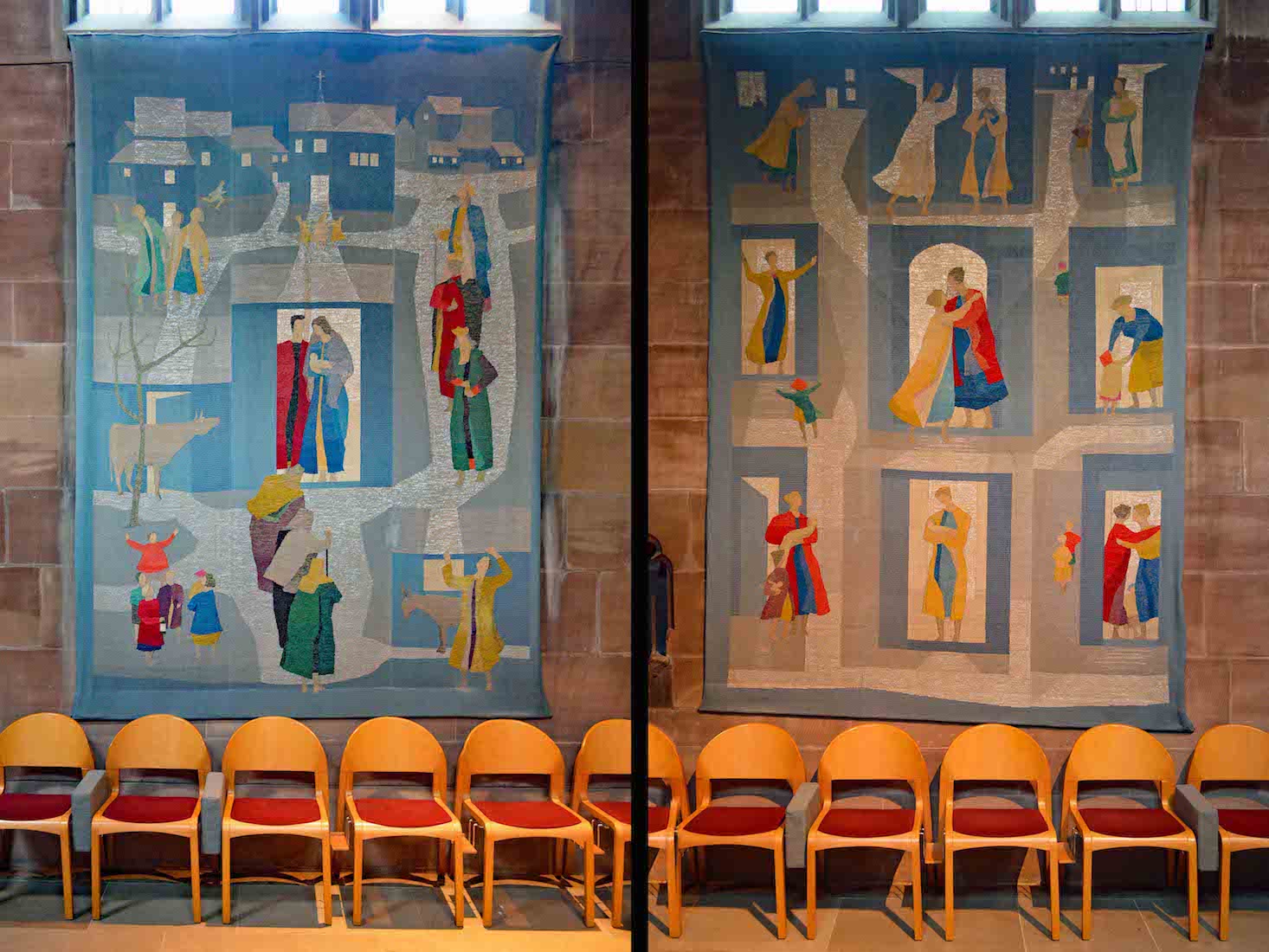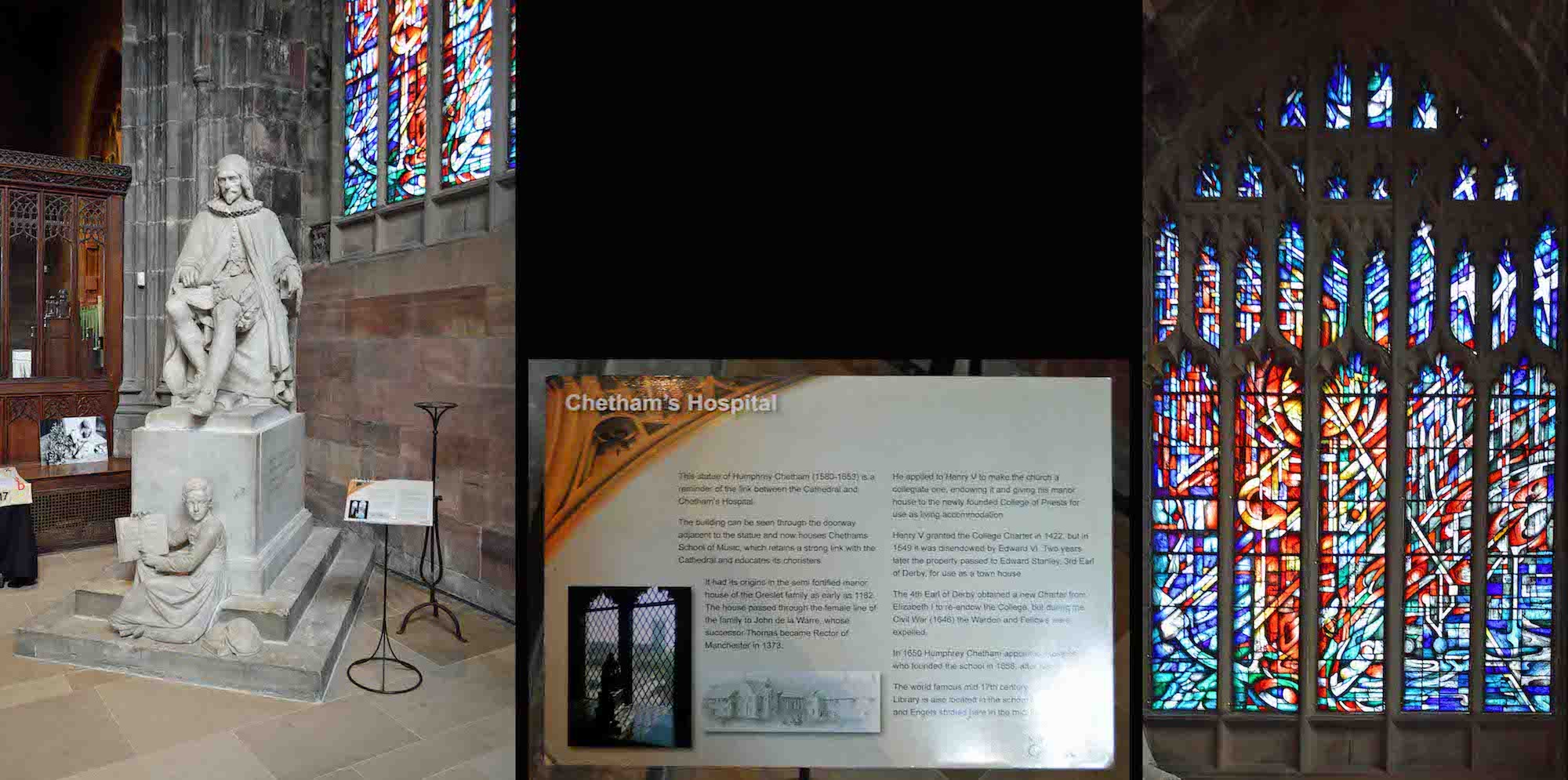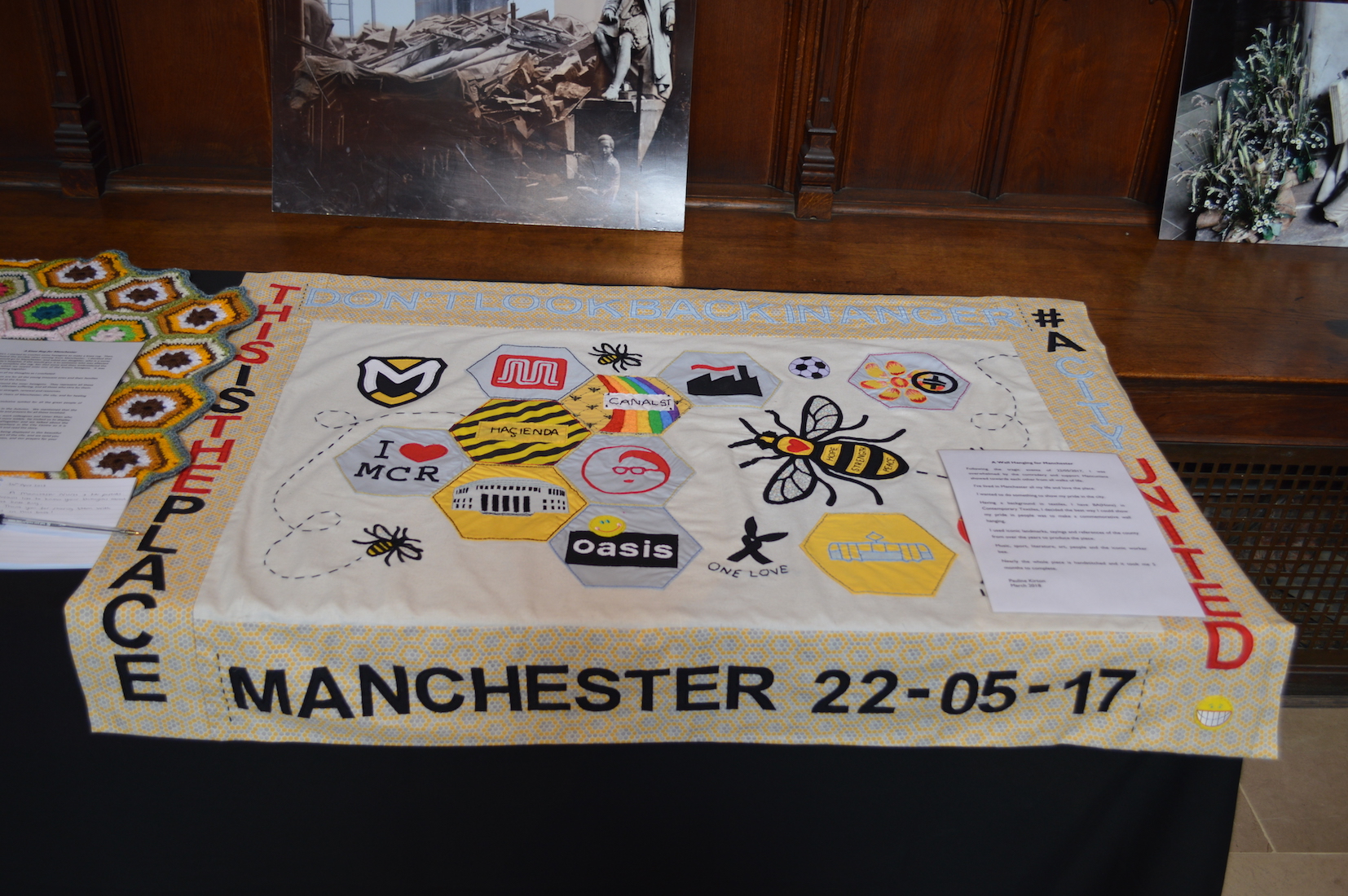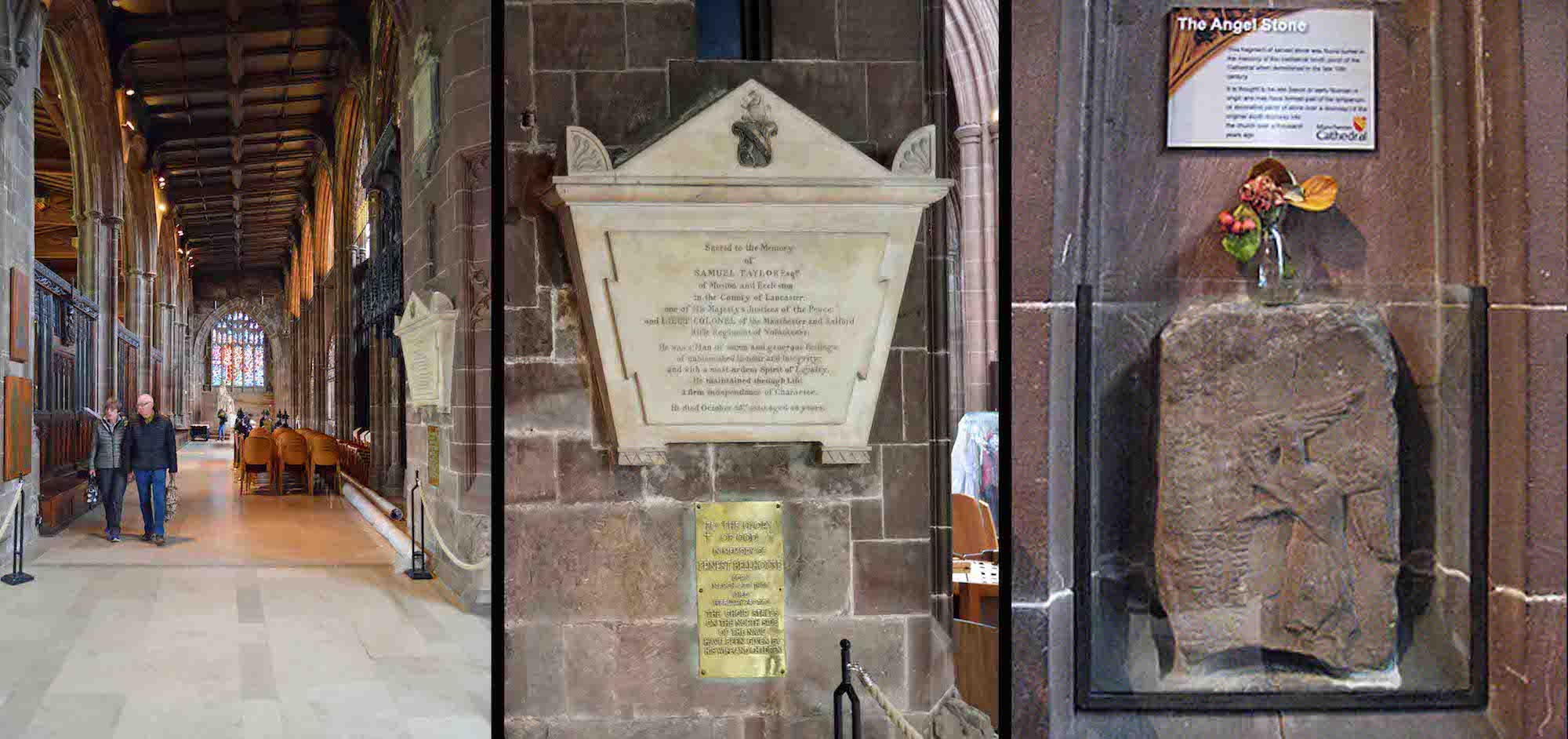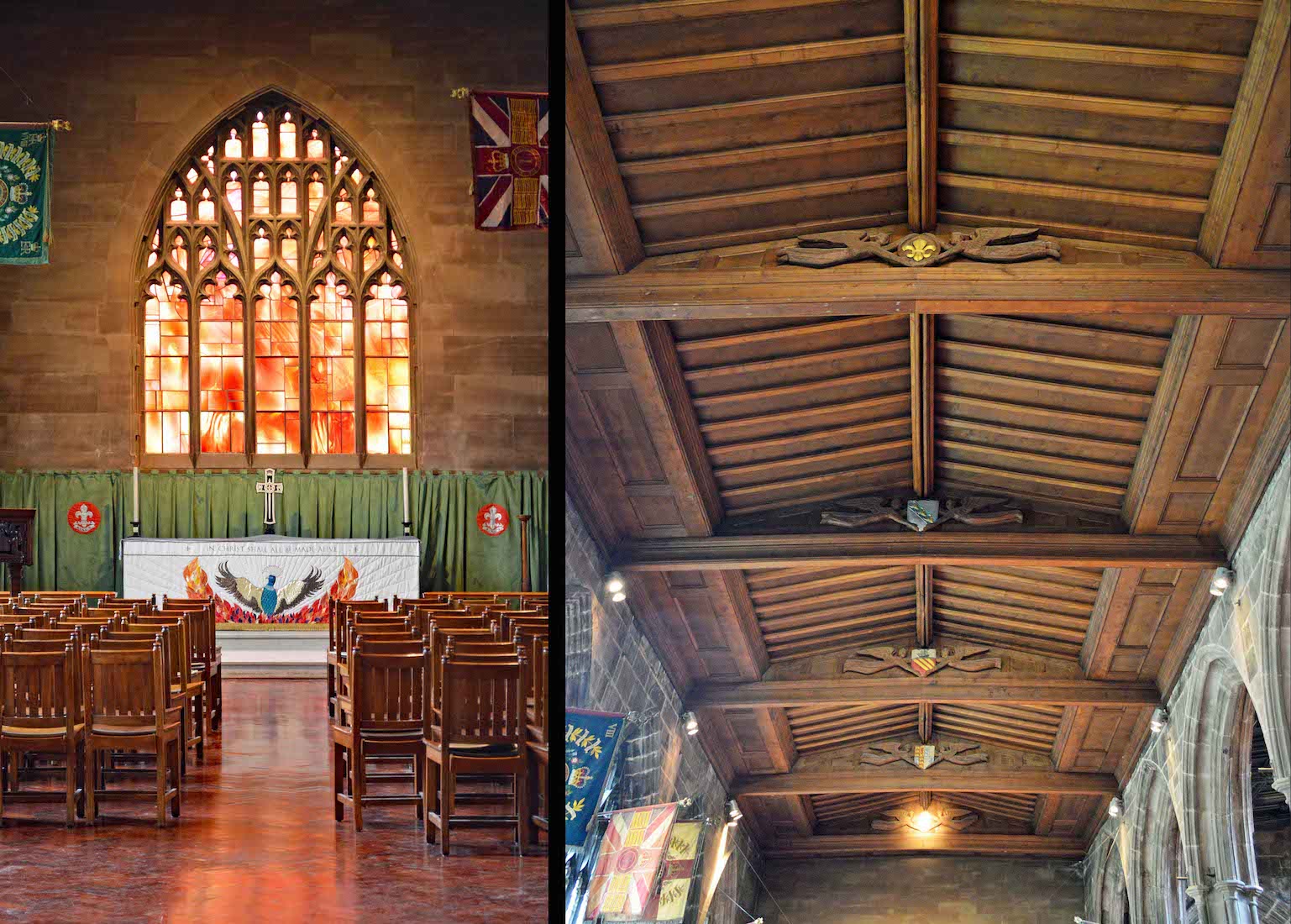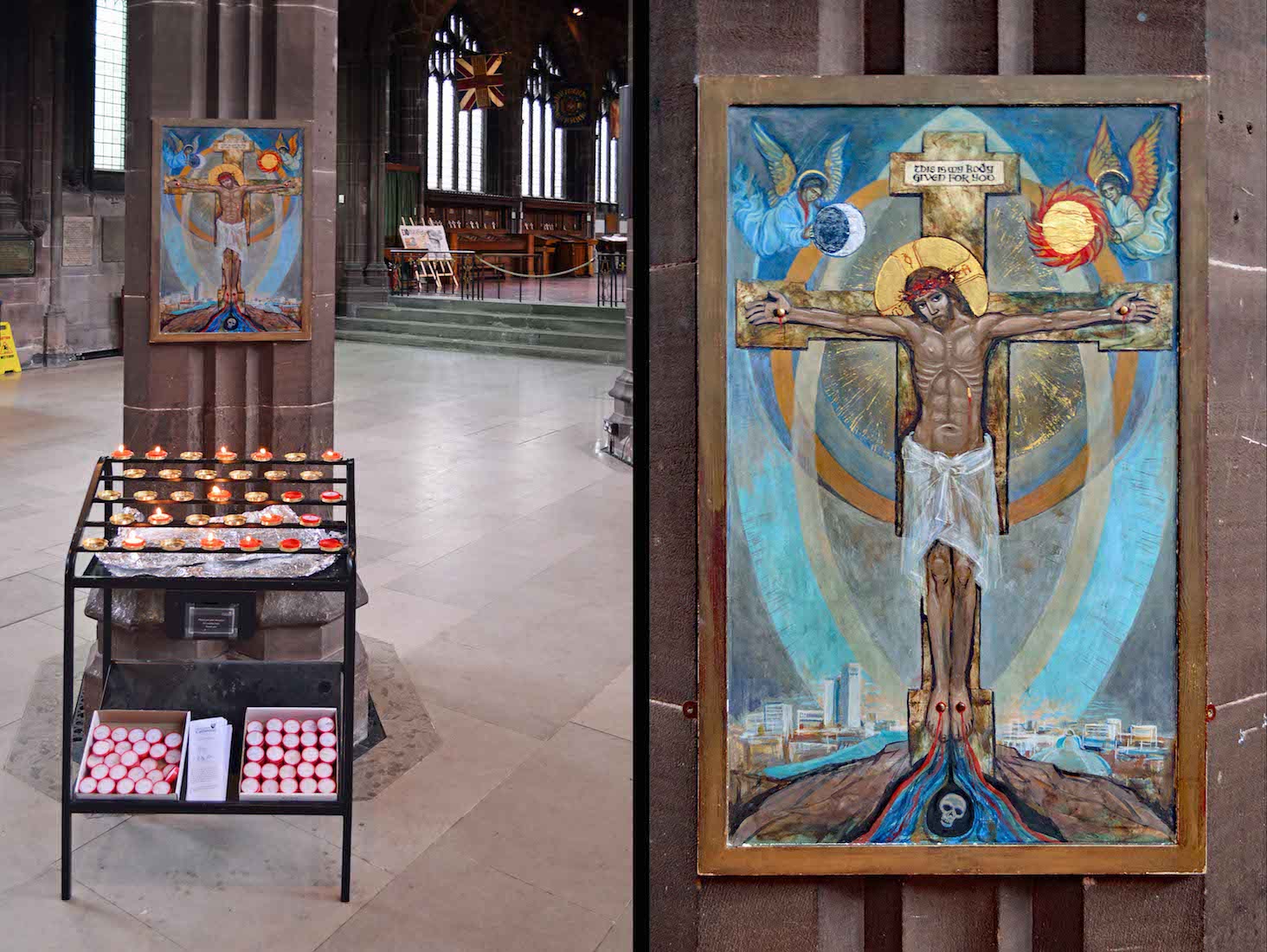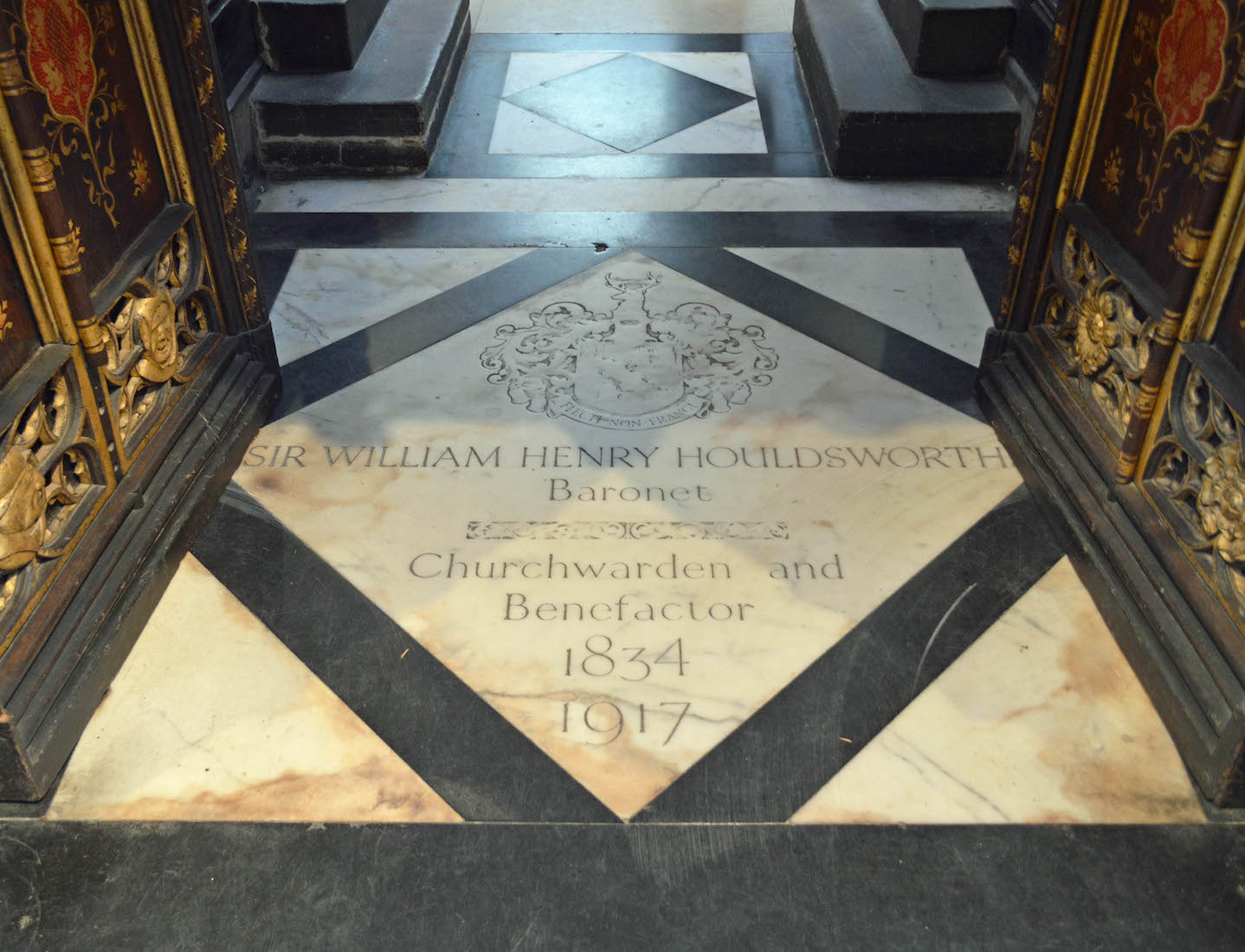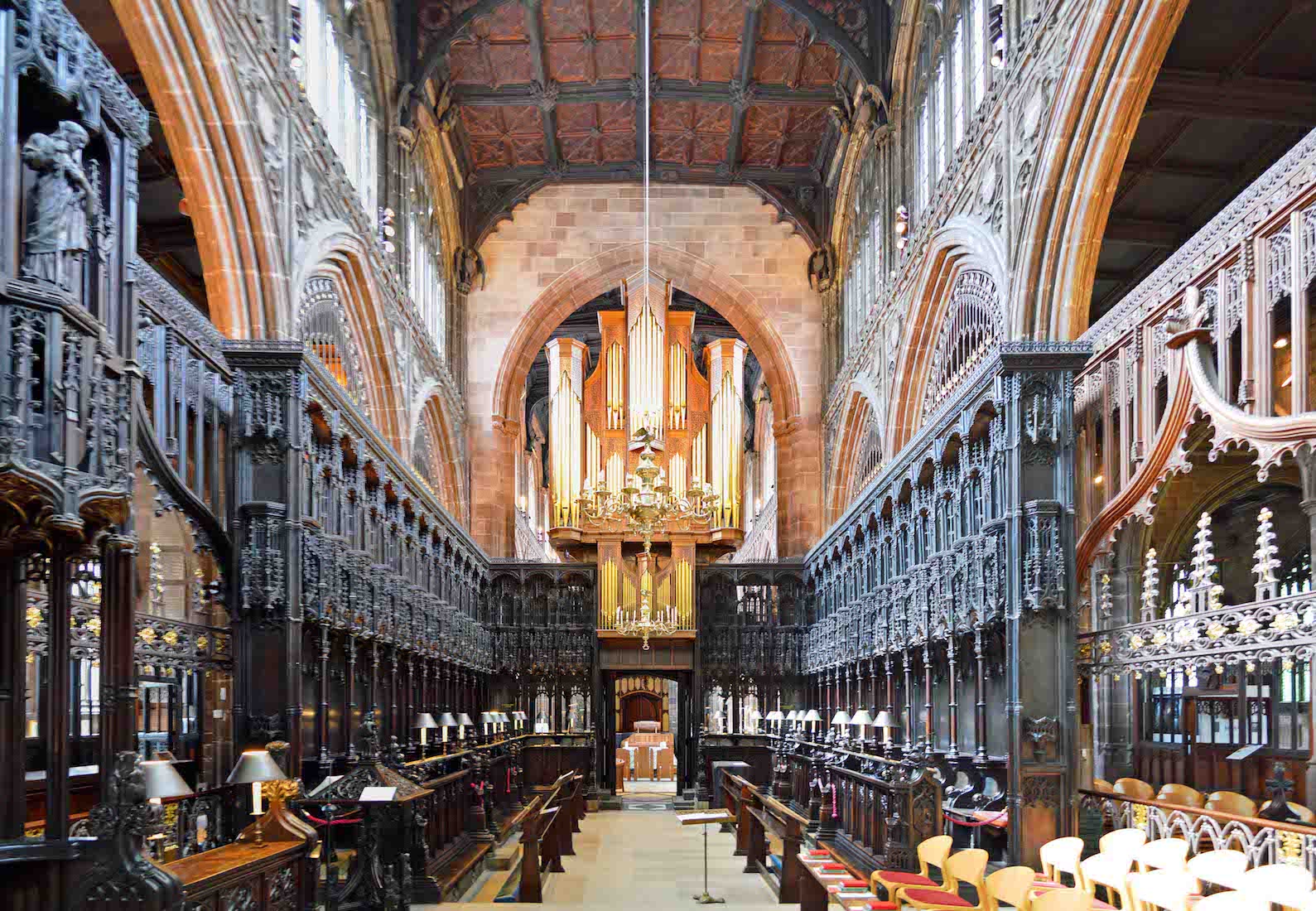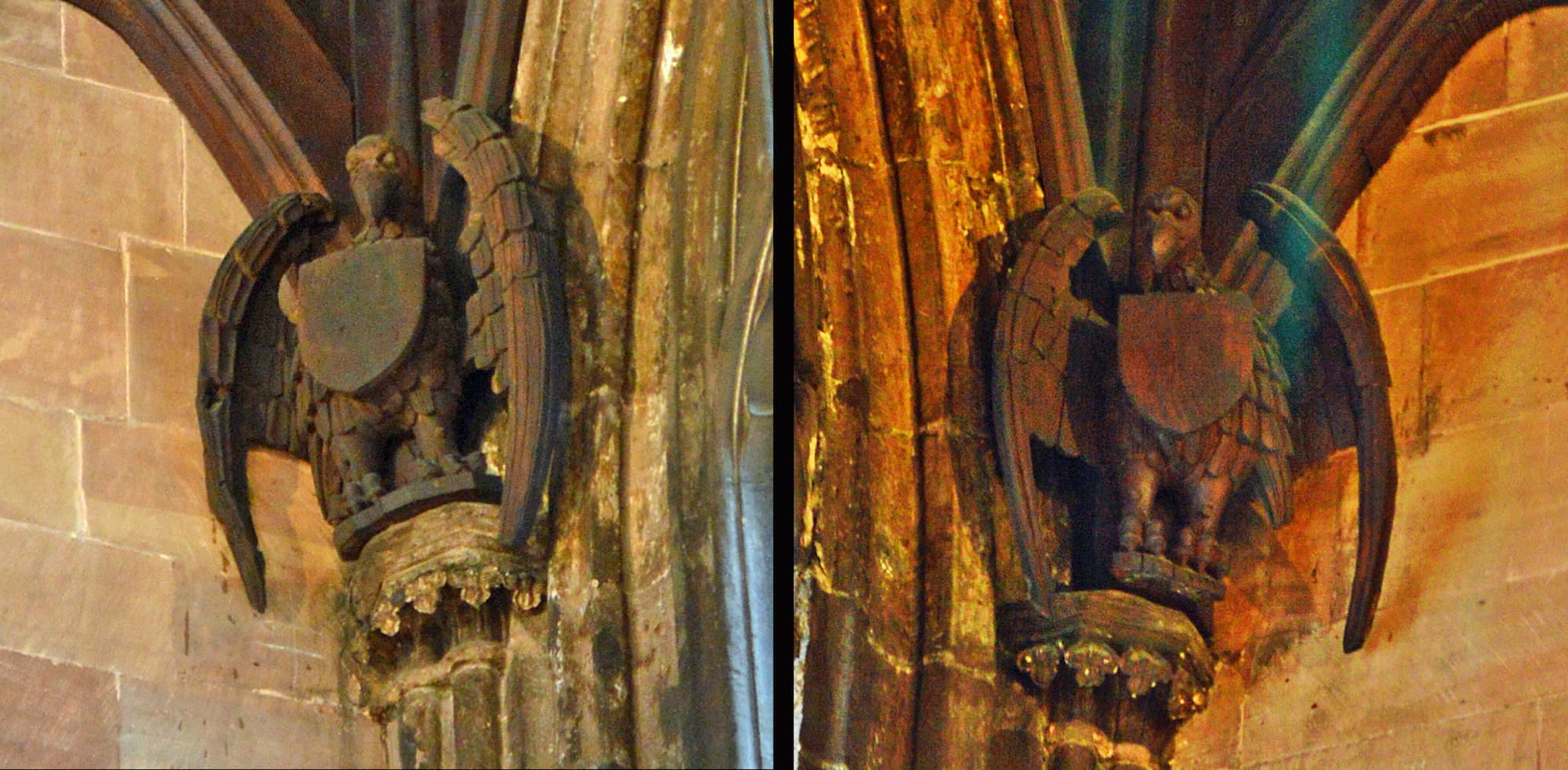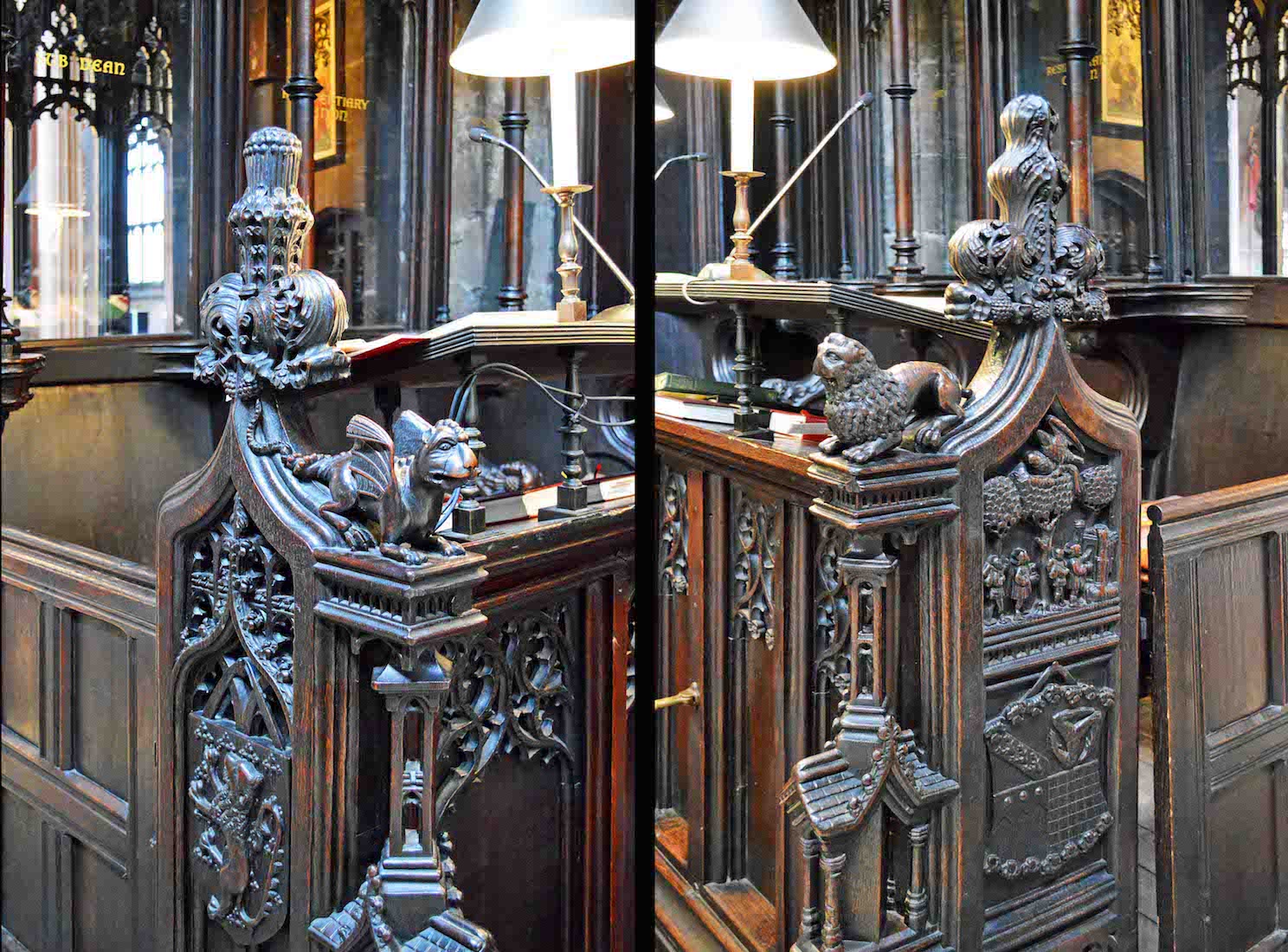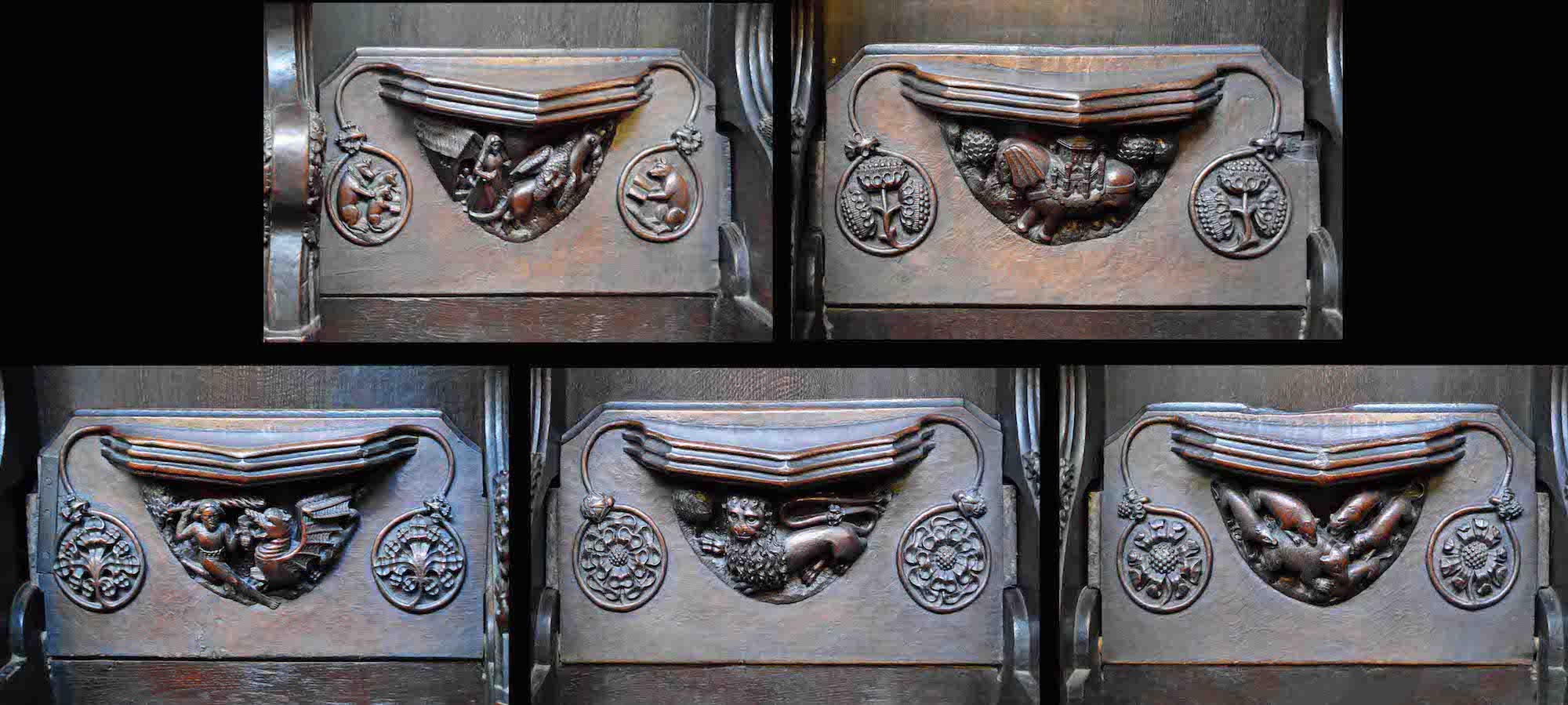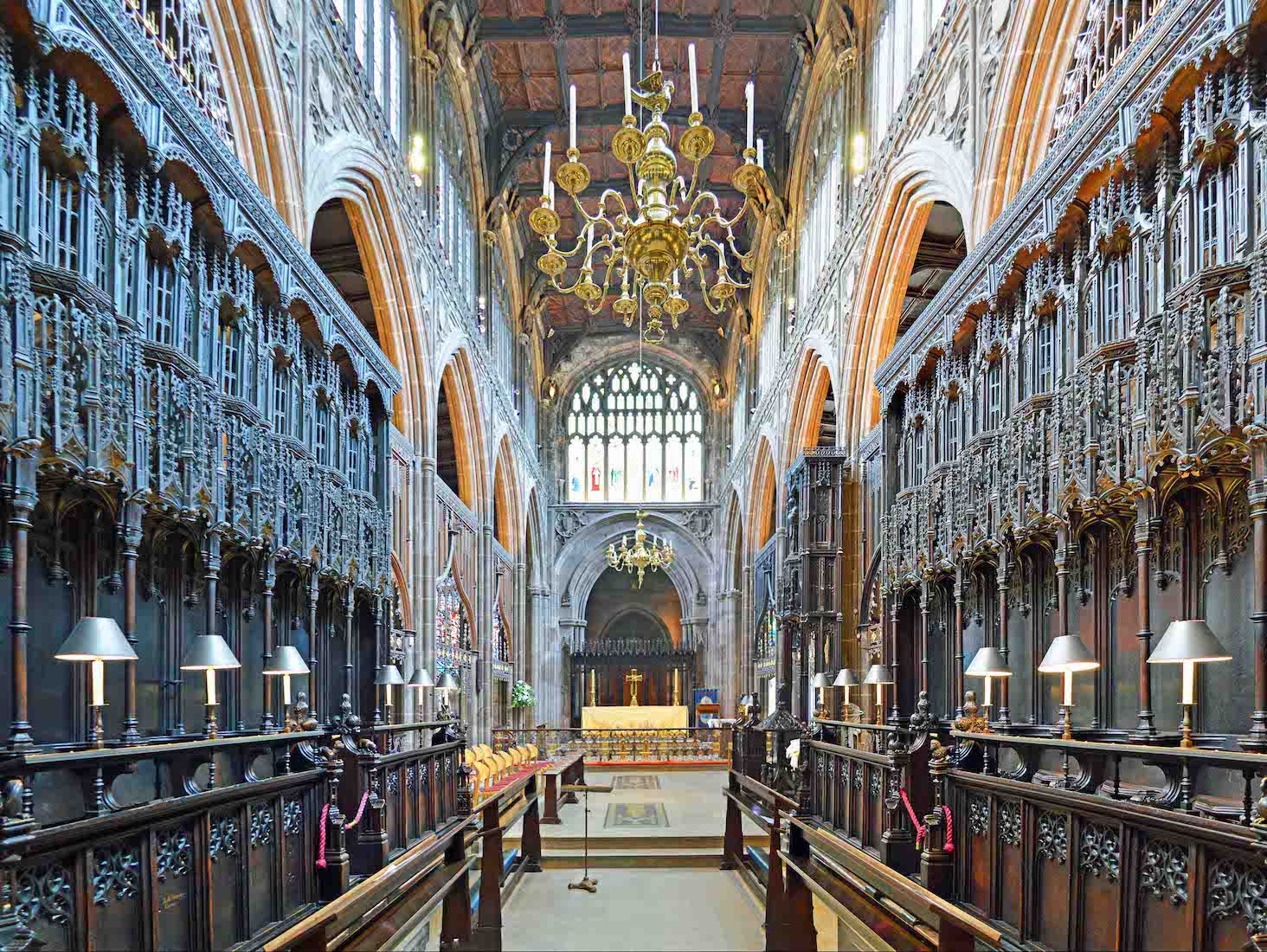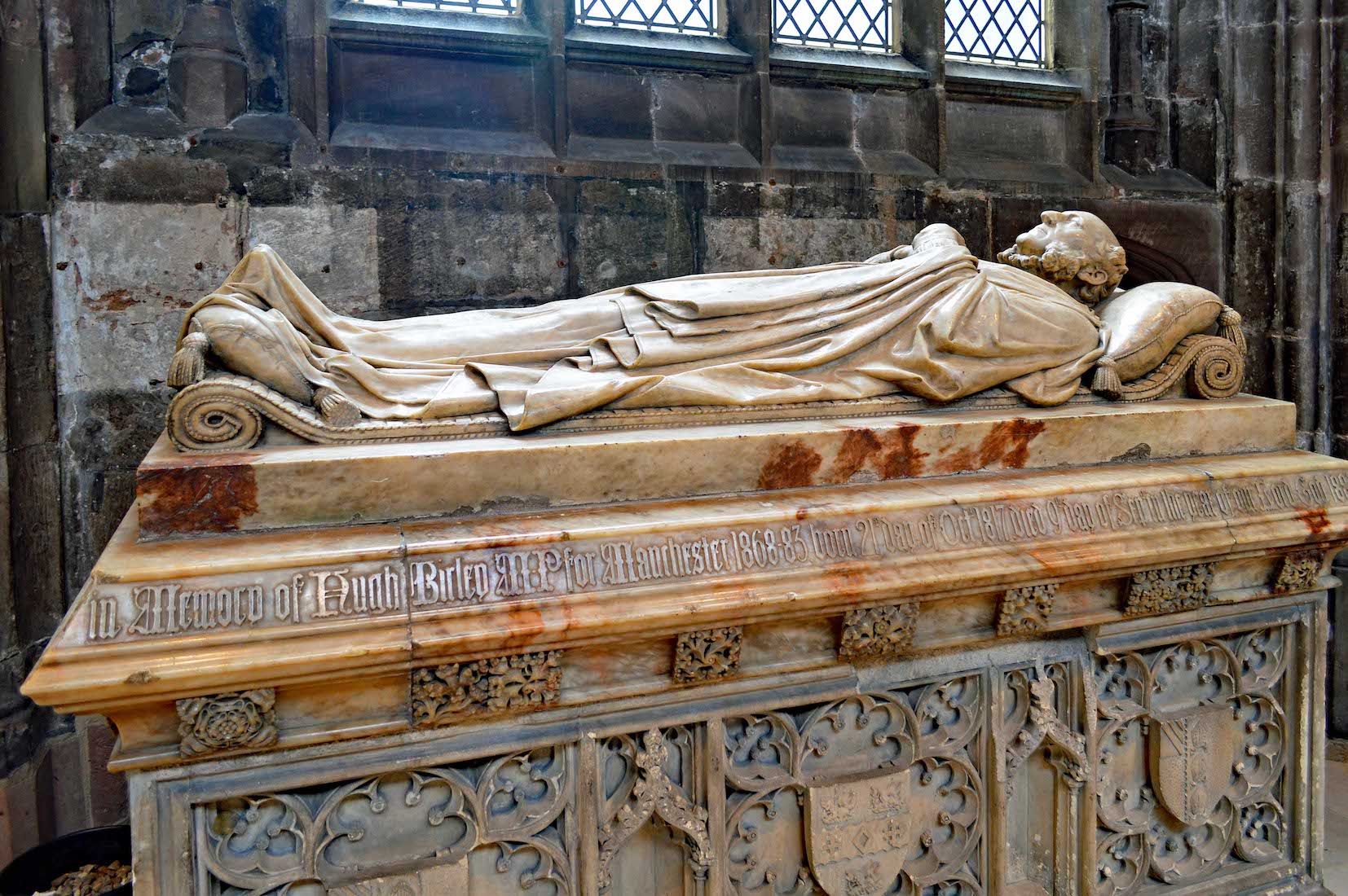
We leave the chapter house and return to the South aisle, facing East. On our right is an effigy of Hugh Birley, MP. (1817 – 1883) who was a British businessman and Conservative politician. He was an active supporter of the Church of England, and assisted in the building of a number of Anglican churches and schools in the Manchester area. In 1868 Birley was elected as the first Conservative MP for Manchester. He retained his seat at the ensuing elections of 1874 and 1880. PLAN
42. ALTAR IN FRASER CHAPEL
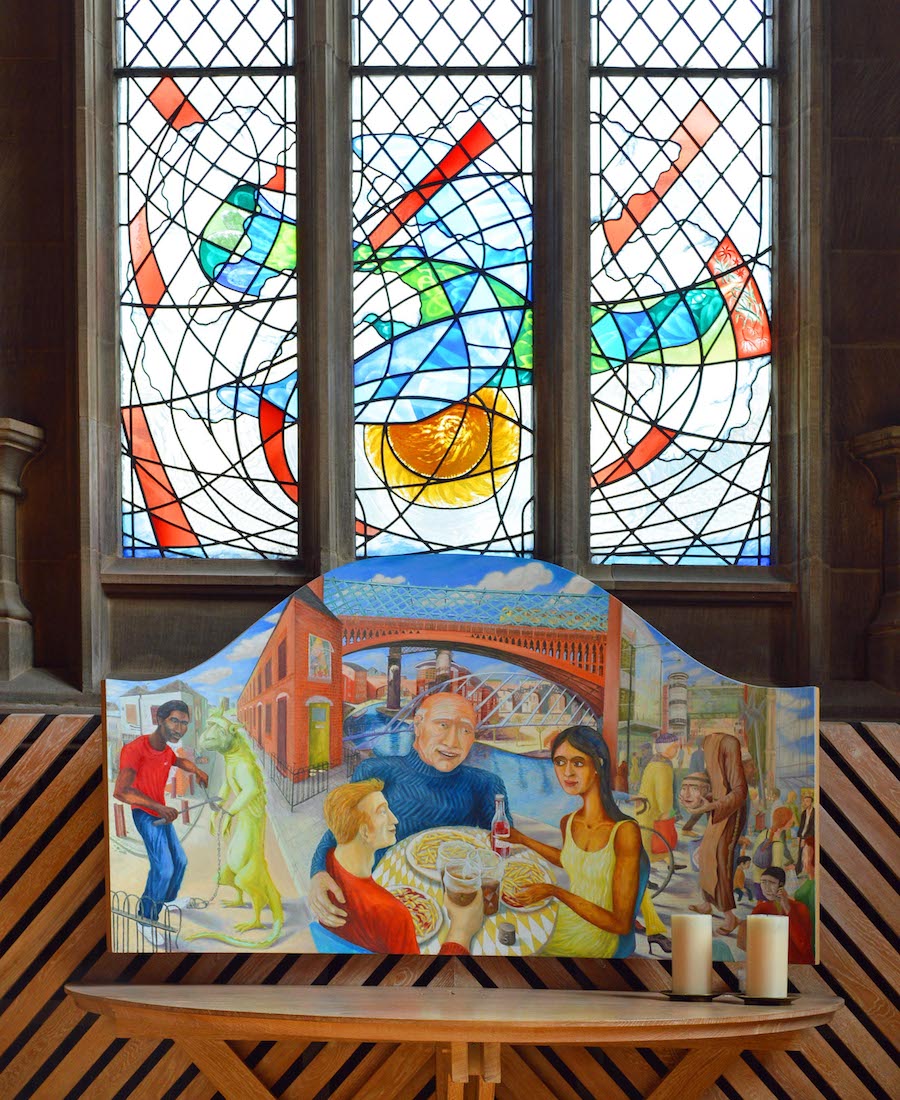
The Fraser Chapel in the Southeast corner of the Cathedral was built in 1887 as a memorial to Bishop Fraser. It is notable for its window, and altar piece painted by Mark Cazalet (2001). This work harks back to early Manchester with its working people and their relationship with this parish … in 1834 the church performed 3,157 marriages, in 1837, 7,285 baptisms! This reminds us that this former parish church became the Cathedral in the new Manchester diocese, largely due to the huge population boom in the city brought about by industrialization.
43. EAST END OF SOUTH AISLE
The statue is of Thomas Fleming (1767 -1848). He was a Tory politician, and an influential figure in Manchester politics from about 1810 onwards. He played an important role in the civic redevelopment of the city, having been involved in widening of streets and building of bridges. He was known as the ‘uncrowned king of Manchester’. At right is the Healing Window, (2004) by Linda Walton, which was installed to commemorate the restoration of the cathedral following the bombing. The lower text reads: Diversity, Healing, Glory, Wholeness, Inclusion.
44. TURNING NORTH
Turning left here we look down the length of the Eastern retrochoir. Just beyond the statue of Fleming, we see a blue banner, and then we shall discover the Lady Chapel. The banner is a Mothers’ Union banner depicting the Virgin Mary holding her baby. Mothers’ Union is an international Christian charity that seeks to support families worldwide. Its members are not all mothers or even all women, as there are many parents, men, widows, singles and grandparents involved in its work.
45. THE LADY CHAPEL
We turn right into the Lady Chapel. This is thought to have been originally built about 1299 by Rector Walter de Langton, Treasurer of England, and also Bishop of Lichfield. The Chapel was destroyed by a German bomb and subsequently rebuilt in its present form, with Austin Wright’s wall hangings, woven by Theo Moorman, and altar furniture by Leslie Durban.
46. ALTAR OF LADY CHAPEL
The altar is covered by a cloth with textile artwork by Cristina Rodrigues. It is part of a collection of four frontals, developed in partnership with Manchester Cathedral. The frontals are in Castelo Branco Embroidery and are a gift from the Municipality of Castelo Branco and the people of Portugal to the people of Manchester, in tribute to the reign of Her Majesty Queen Elizabeth II.
47. LADY CHAPEL SCREEN AND ICON
The simple wooden reredos behind the altar has the words of Mary: ‘My soul doth magnify the Lord’ across the top. The hanging lamp signifies that the reserved Elements of the Eucharist are kept in this Chapel. These are used for example during the week in ministering to the sick. The icon is of ‘Our Lady of Perpetual Sorrow (Succour, Help)’, based on a 15th century Byzantine icon.
48. CHAPEL WALL HANGINGS
On either side of the Chapel is a wall hanging by Austin Wright. These give stylized depictions of events in the life of Mary. Austin Wright (1911 - 1997) was a sculptor who lived and worked in Yorkshire for 60 years. Alongside many sculptural commissions, Wright received commissions to design tapestries for cathedrals at Manchester, Wakefield and Derby. We now leave the Lady Chapel and continue along the retrochoir.
49. STATUE AND HOPE WINDOW
In 2016, Manchester Cathedral installed and dedicated the new ‘Hope Window’ designed by glass artist Alan Davis and generously sponsored by The Oglesby Charitable Trust. The design revolves around the themes of hope, innovation, and new life. The statue of Humphrey Chetham sits by this window with a young student at his feet. Chetham’s school and library was at the heart of the early development of Manchester.
50. MANCHESTER MEMORIAL
Also in this Northeast corner is a small memorial to a recent Manchester tragedy. The Manchester Arena bombing was a suicide bombing attack in Manchester on 22 May 2017. An Islamist detonated a shrapnel-laden homemade bomb as people were leaving Manchester Arena following a concert by the American singer Ariana Grande. The incident was treated as an act of terrorism. Twenty-three people were killed, including the attacker, and 139 were wounded, more than half of them children. Several hundred more suffered psychological trauma.
51. LOOKING BACK ALONG THE NORTH AISLE
We complete this part of our investigation by walking back towards the nave. On our immediate right is a memorial to Samuel Taylor of the Manchester and Salford Rifle Regiment volunteers who died in 1820. Below is a memorial to Ernest Bellhouse (1838-1910). One side of the choir stalls were given in his memory. We return to the nave. In the final column at right is the angel stone found buried in Cathedral masonry and thought to date from Saxon times.
52. THE REGIMENTAL CHAPEL
The Regimental Chapel opens off the Northeast corner of the nave. It is the largest of the Cathedral chapels and expresses the Cathedral’s strong relationship with the Duke of Lancaster’s Regiment. The chapel houses many remembrance books, and regimental colours, and boasts a glorious stained glass window. The altar cloth pictures a phoenix rising from the ashes – an early Christian allusion to the Resurrection of Christ.
53. CHAPEL ALTAR AND CEILING
The window at the end of the chapel dedicated to the Manchester Regiment is the Fire Window by Margaret Traherne (1966). It was designed by the artist to commemorate the cathedral’s rebuilding after the blitz and represents the flames of the fires caused by the bombing. The window was destroyed by the IRA bomb that was exploded a few streets away in 1996, and it had to be reconstructed by the artist.
54. NAVE SHRINE
In the nave and just back from the Regimental Chapel is a shrine wth a painting of Christ on the Cross. Across the top of the Cross is written ‘This is my body given for you.’ The figure is within a mandorla (almond) shape.
55. THROUGH TO THE CHOIR
From the nave we can walk through the doorway in the choir screen to the choir and sanctuary area. In doing this, we walk across a floor tile remembering Sir William Henry Houldsworth, Baronet, who was a Church warden and benefactor. He lived from 1834 to 1917.
56. CHOIR STALLS LOOKING WEST
From this viewpoint looking back, our eyes are drawn past the choir stalls to the gold plated organ pipes. James Stanley (warden 1485–1506) was responsible for commissioning the late-medieval wooden furnishings, including the choir stalls. These were carved at the workshop of William Brownflet of Ripon, and are the finest of a series which includes the surviving stalls at Ripon Cathedral, Beverley Minster and Bridlington Priory.
57. HIGH EAGLES
On either side of the organ pipes as seen from the choir, there is a high eagle holding a shield in its claws – or at least it would if it had a spare set!
58. QUIRE CARVINGS
Where the choir stalls end by the entry from the nave, they are beautifully carved with rich detail.
59. MISERICORDS
The cathedral has thirty 16th-century misericords, considered to be among the finest in Europe. They are similar in style to those at Ripon Cathedral and Beverley Minster. Although Manchester’s are of a later date, they were probably carved by the same school at Ripon. One of the most notable is the earliest known depiction of backgammon in the UK (not shown).
60. QUIRE STALLS LOOKING EAST
We turn and look the other way, towards the altar. Above the altar is the East window, and high above us hang two large candelabras. This is a beautiful space, although surprisingly narrow considering the dimensions of the nave.


